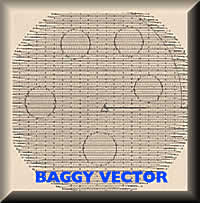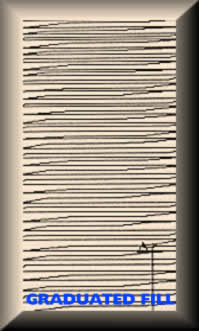 |
System used:
ApS ETHOS
This system combines a powerful editing tool along with
ease of digitising. This allows for a precise rendition of your
design.
"Having worked in the
embroidery trade for over fifteen years, I understand the importance
of smooth running designs with regards to embroidery machine efficiency.
DON'T PAY for stitches that don't add to
your design, or causes your machine to bunch up, and gives you
unproductive machine down time".
Philip Ford
|
STITCH EFFICIENCY

|
The Ethos digitising/punching system allows for areas
within an outline to be left unstitched.
This prevents the design from becoming too dense in one
area.
The density of the filling/step stitch can be carefully
regulated to allow for the type of material that your design is
being embroidered onto. For example, satin material requires a
fairly open density to prevent needle damage, but towelling needs
a good grounding of understitches to prevent the tufts rom encroaching
on the final appearance of the finished design. This factor also
applies to satin stitch areas, whether they are borders or part
of a motif. All of these factors are taken into careful consideration
when producing your design.
|
FILL/STEP STITCH EFFECTS
There are many stitch effects that can be utilised in the making
up of a design. These can either be used to give pattern, shading
or texture. Because embroidery has a three-dimensional quality,
and refraction takes place, various effects can be used to enhance
your design.
For example: (1) baggy vector, (2) step vector and (3) block vector
can all bring out subtle qualities in your finished design.
|
|

|
In baggy vector, specified shapes can be made to stand
out from their surrounding block due to the fact that they are
stitched differently i.e. as a satin stitch.
|
|

|
With step vector you can intersect the step/fill stitch
block with lines or shapes of your own choosing. This then interrupts
the plain pattern, and stitches a pattern according to the lines
that you have inserted.
|
|

|
In block vector your background can carry a shape, or
perhaps the name of your company as a repeated pattern.
|
 |
In addition to the above effects, by changing the angle
of offset different textures can appear in the step/fill stitch
that can be used to great advantage in describing form.
Graduated fill shading can be introduced by placing a
graduated step/fill stitch over the top of another filling stitch.
Thereby giving the effect of something being round, curved or
in shadow. The step/fill stitch goes from a close stitch to a
more open stitch as it progresses.
|
 |
The Obi fill is a special type of stitching that forms
concentric rings from the centre outwards within any given shape.
It can be very effective as a decorative feature.
|







